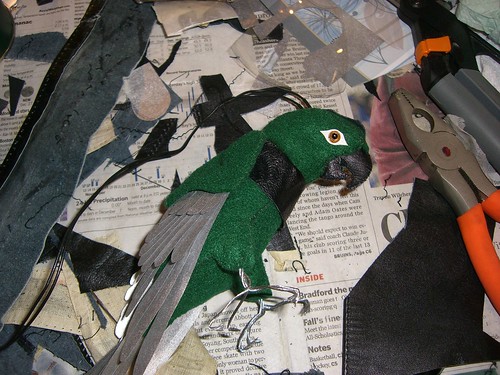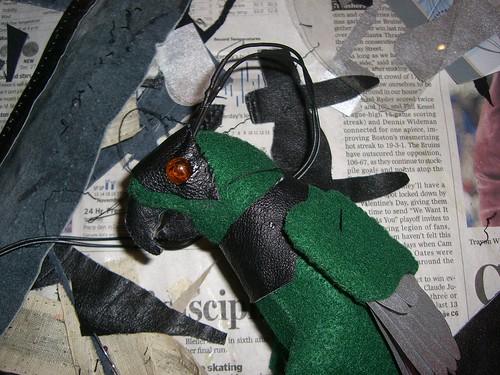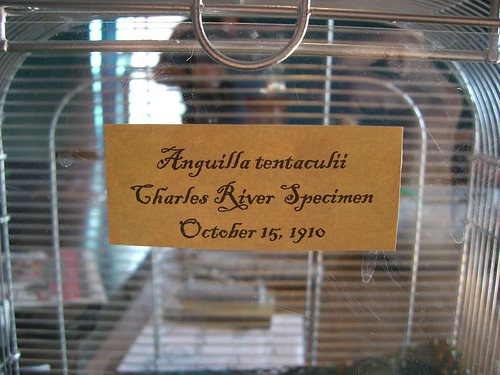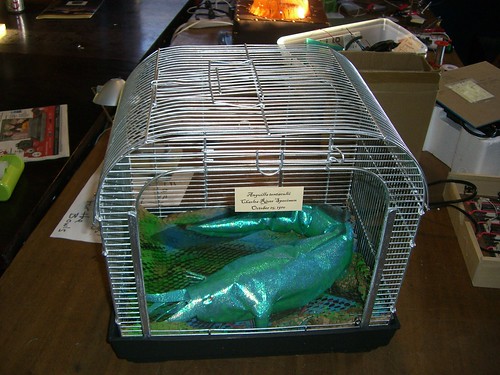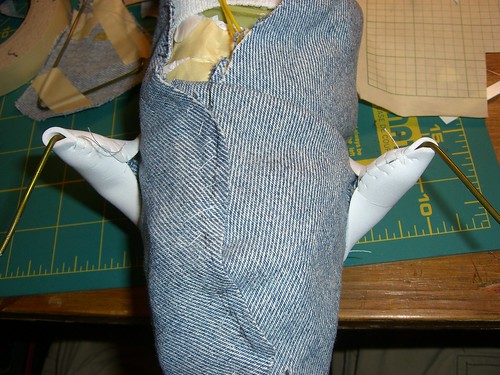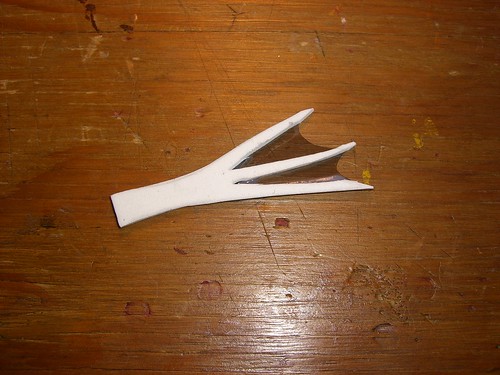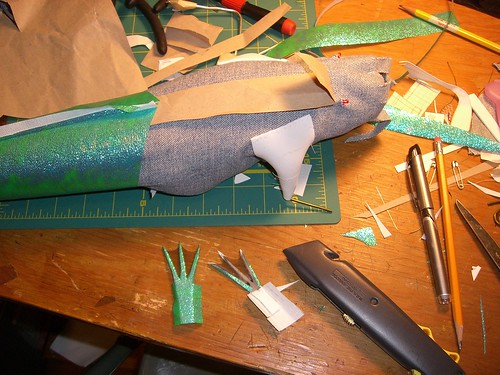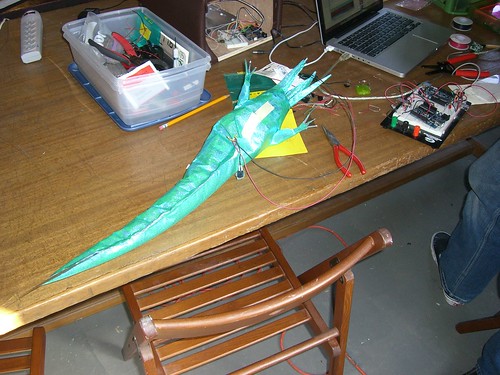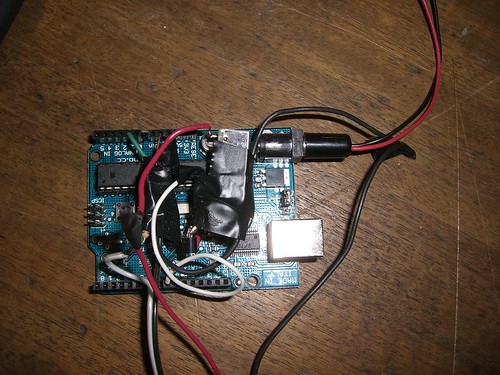I really should have written this up right away after Arisia, so that I would have good notes on What Not to Do for a future iteration of the costume. Assuming there will be another. Which there might. Or at least there might be a future prosthetic arm, perhaps in a steampunk style rather than Borg.
So.
Cables: A cable that runs from the forearm all the way to the chest is Not Good. It meant I had to take off the upper arm piece, and disconnect the cable from the battery pack, in order to remove the forearm. Having a cable that can plug in at either the battery OR the forearm would be much better. I think having the cable attached to the upper arm, and then running from that in both directions, would work much better. (Or, put the power source for the arm activator -in- the arm, and reduce the number of cables. Though in this case, more cables was good, because Borg have lots of cables dripping off them.)
Arm activator: The pager motor worked fairly well for something thrown together in the last couple nights. But something that did something more interesting than spinning around and going VVVRRRRRR! would be nice. Something that moved in a grabby sort of manner, perhaps?
Weight: The leg was heavy. Actually, it was the foot that was heavy. The Borg foot (which just fit right over a normal boot, like an immense spat) was heavy and made walking difficult. For the future, making a foot/lower leg assembly out of paper mache, and then covering that with leather, would be better than chopping up a heavy pair of rubber boots and sticking them together with duct tape.
Leg awkwardness: The upper and lower parts of the leg armor got hung up on each other at times and made walking a bit tricky. And stairs VERY tricky (esp. with the big, heavy foot). Adding some hinge-looking bits to the outer knee would have been a nice touch aesthetically. The cable ends came loose a number of times, too.
Cable attachments: Cables were firmly fixed at one end with duct tape (or Gorilla tape), but shoved into a loop of tape/leather at the other. Some of the cable ends stayed in place pretty well with that arrangement, but a lot of the leg cables pulled out of their tape/leather end. Should look for some sort of easy-release clip or something. Perhaps some sort of clip that is designed for cables/tubing – which could be hidden inside a leather shell so that it doesn’t look like audio cable, but like it penetrates into my body. The cable that I wanted to run from my head to my torso didn’t work at all because I didn’t have a good way to keep the body end of it from pulling free.
More fiddly bits: Could have done with more LEDs and mechanical pieces. Matter of time, by which I mean I should have started more like 6 weeks, minimum, in advance instead of 4. Tritium keyring things would be a great way to get a nice glow without having to worry about a power source.
Eye prosthesis: It looked great, was pretty comfortable, and the visibility wasn’t terrible (though I really missed having peripheral vision on that side!). However, it would have been great fun if I’d had it hooked up to the shutter thingy. I need a longer remote shutter release for that, and a good way to connect that cable to the headpiece and the rest of the body armor, so that it will stay in place, and not be too likely to get hung up on things in the environment. Perhaps adding some LEDs to that (which I could turn on and off – don’t want them on ALL the time, thank you), or an other layer of lenses or something that could be rotated into place from time to time . . . So many possibly variations and so little time!
The pirate bits worked pretty well. The kerchief was unbelievably slippery and I had to clip it to my hair, and the shredded shoulder made it a real pain to get Frankie attached to my shoulder cables, but since I probably won’t redo the pirate part (or even the pirate Borg combo), that’s not something I’m much worried about.
People pretty well “got” the pirate aspect of the costume. I think. I heard several comments like, “Oh, there’s someone doing that steampunk/cyberpunk combo” or just plain “steampunk;” about as many people understood that I was (partially) a Borg as did NOT understand, but whether that was due to lack of familiarity on their part with Star Trek, or due to my failure to make something that was obviously Borg, I do not know. I got a lot of compliments, it was fun to make and fun too wear, and not too terribly tiring (though a day and a half was a bit long, see:weight issues), and really that was the point.
I need to get a bunch of photos of the pieces, since I didn’t document the process well (too busy building to stop and photograph), after which this will all make more sense to people who are not me.





